Create a Drawing on a Tablet
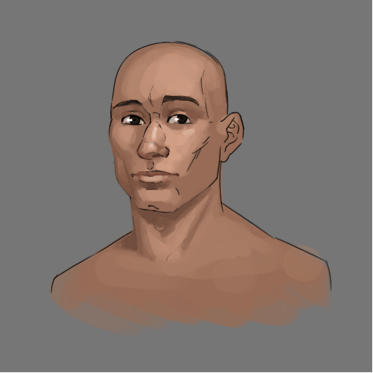
Drawing on a tablet is a bit different compared to drawing on paper. The differences in how you handle it can be disorienting. So, I'm going to offer you some tips to help you get familiar with your tablet.
For this article, I will assume that you are using a classic graphics tablet (without a screen), but my advice will apply to all the digital drawing tools you may use (different types of tablets, but also different applications or drawing programs).
A tablet can slide
It may seem silly, but your tablet doesn't have the same texture as paper. Where your pencil scratches and rubs on paper, your stylus will glide on your tablet, as it is much smoother. The result is that you have a little less control, a little less precision.
The problem is compounded if you have a "classic" graphics tablet (without a screen) where your eye and your hand are in two completely different places. What's the solution then?
PRACTICE ON GRAPHIC TABLET
First, it's all about practicing and getting used to it, simply put. Open your favorite application, take your stylus in hand, and start by drawing straight lines (all drawing software has a tool for that) and follow it as best you can, but freehand. Now, do the same thing without a line to guide you.
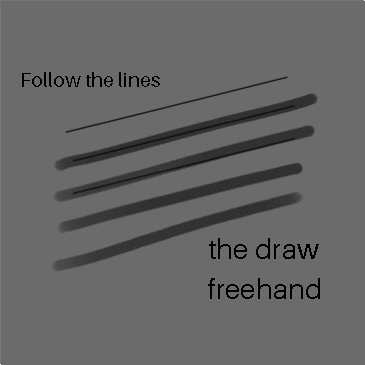
If you have your elbow screwed to your table and you draw by only moving your hand and wrist, you will probably have shaky lines. This is a concern that also exists on paper, but we tend to forget our good habits when switching from paper to a digital method.
Try drawing without bending your wrist. Instead, keep your elbow flexible! Whether you want to draw a straight line, a circle, or an elegant curve, starting the movement from your elbow will give you much more stability.
Wrist movements have their place for small details, but for large curves, don't be afraid to make big movements.
And direct your eye to where you are going to move your cursor at the end of the movement. It's like riding a bike or driving a car, you don't look at the road just in front of your wheels, you look as far ahead as possible to smoothly follow the road's trajectory.
Now, continue practicing drawing freehand lines.
Draw curves, parallel lines, and circles, and gradually your coordination will improve. Your brain, your eye, and your hand will learn to reorient themselves in this new workspace.
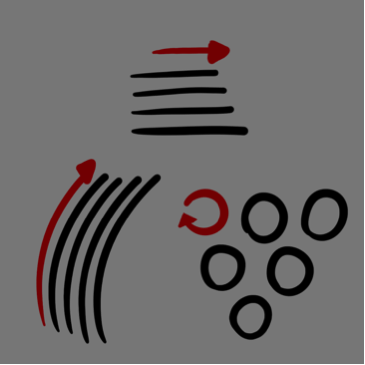
You can also apply some tips to improve your comfort on a tablet:
- Tape a sheet of paper onto your tablet
This will provide more friction to the surface and therefore more control. Be careful, you will wear out the tip of your stylus faster. They can be replaced, but depending on the brand, replacement tips can be an investment.
- Rotate your tablet in all directions
You have the right to turn your tablet (or rotate your document on screen) to be more comfortable with the direction of your brush strokes, hatching, etc...
Understanding Pressure
Unlike a mouse, styluses can detect the pressure used when pressing on the tablet: this allows for control of the properties of drawing tools in the application of your choice, in particular, the size and transparency of brush strokes.
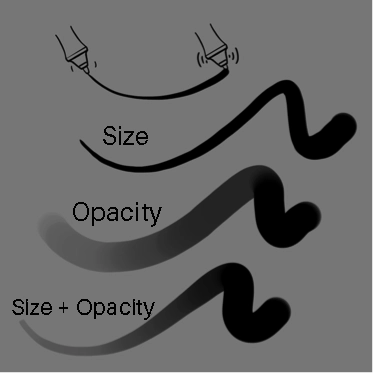
Most recent tablets detect up to 8,000 levels of pressure, in other words, very subtle variations in the force with which you press.
Tame the sensitivity of your tablet by drawing lines in the program of your choice while varying the pressure you apply. Generally, there's no point in pressing like a brute.
LEARNING TO DRAW ON A GRAPHIC TABLET
Well, you're probably getting tired of doodling. And you're wondering how to create a drawing. No worries, we're getting there!
To start, refrain from using brushes that are too wide. It might be tempting to start drawing with large pencils to quickly cover the surface. But just as you wouldn’t draw with an unsharpened large pencil (or if you do, you can stop reading this article right now and go sharpen your pencils, you’ll thank me later), the same applies to your tablet. Starting with a small cursor doesn't prevent you from drawing the big lines, and you'll be able to add more details and your drawing will generally be cleaner.
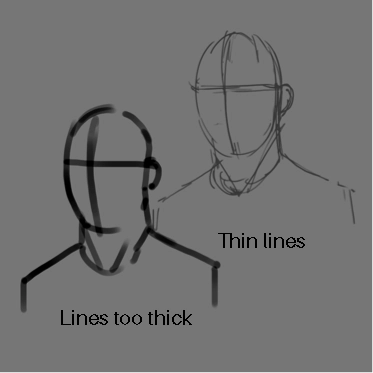
I also recommend using a type of brush that employs pressure sensitivity, which will give you more control.
You can also draw with a transparent brush, or draw on a partially transparent layer, which will allow you to keep your drawing as clean as possible as you detail your drawing, making increasingly opaque strokes.
Once again, it's the same principle as with a pencil and paper: it's best to start a drawing without pressing hard, to sketch out the major shapes. As the drawing takes shape, you can assert the lines more and add more and more detail.
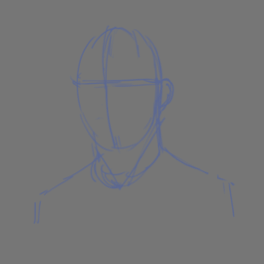
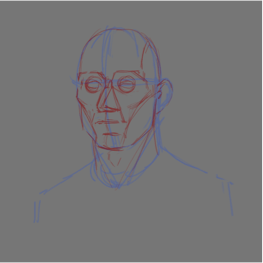
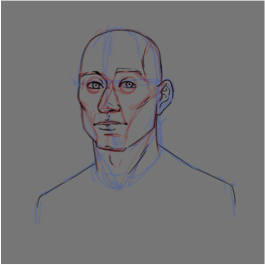
ADDING COLOR
I am looking for the color I wish to achieve through various mixtures. Generally, there are lighter areas in bony regions, for example, around the eyebrows, the forehead, along the nose, and the edge of the chin. You will see that this immediately gives the impression that the person is "more alive."
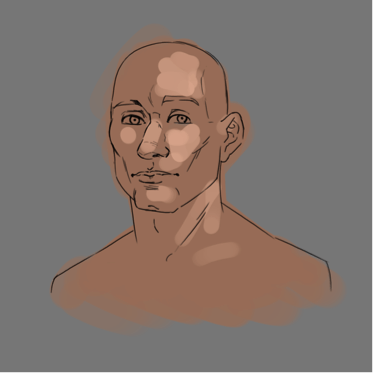
Then I will add details to the face.

Remember that there are courses in the Digital Painting Course in which I explain more details about color in particular. There will also be an article on color, which will be more explanatory, for those interested.
All this advice must be adapted to your drawing application. Naturally, there will be small differences, but the general principles remain the same.
With practice, you will be able to draw on your tablet just like on paper.
Indeed, the tablet is less precise and slips more, as we have already discussed, but you can zoom in to work on details, place guides, etc.
However, if you encounter difficulties, do not hesitate to start your drawings on paper.
I find that drawing on paper frees my imagination and allows me to come up with ideas that I then recreate and finalize digitally.
Get your styluses ready!
Illustrator and writer: Maxime Teppe

